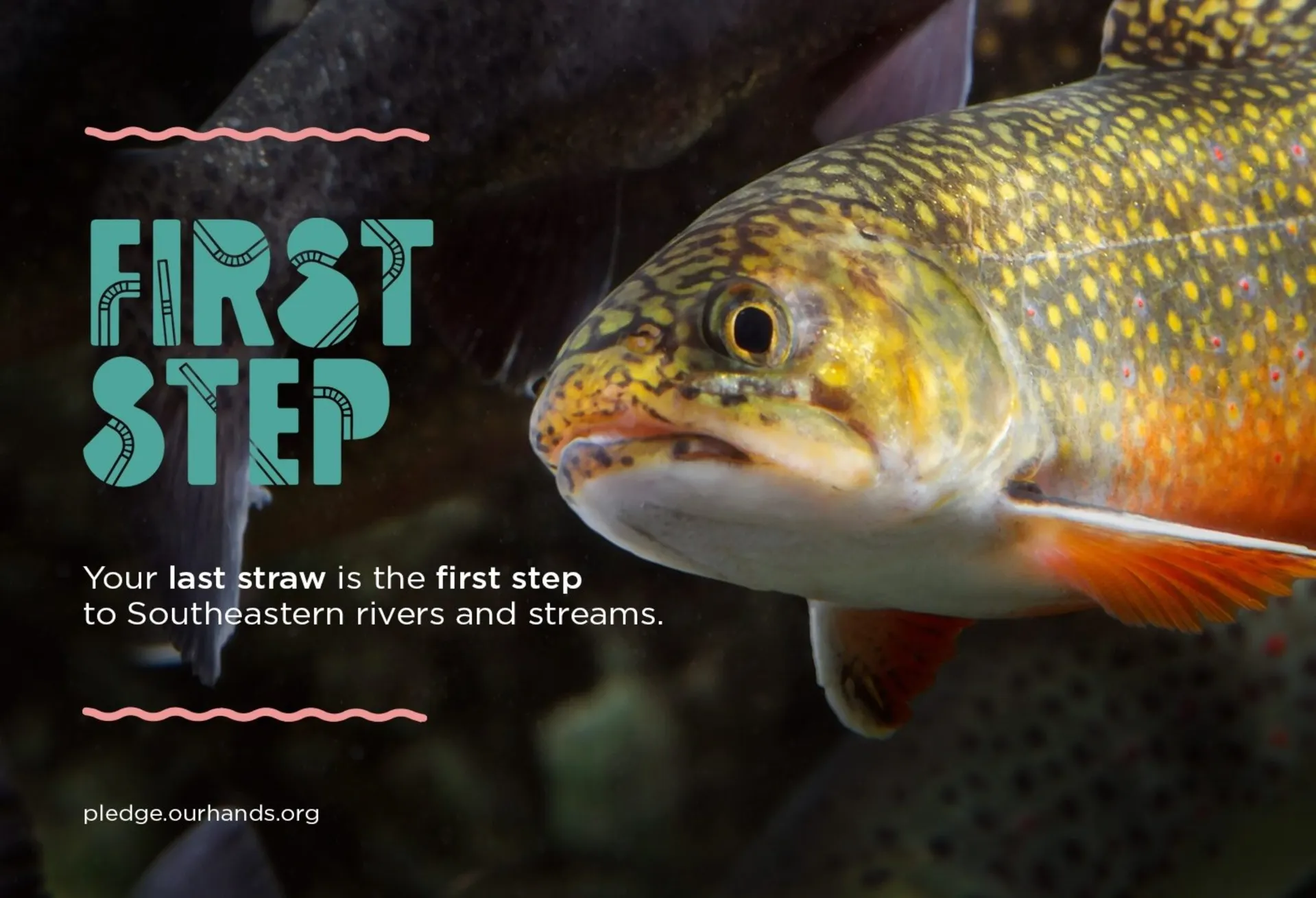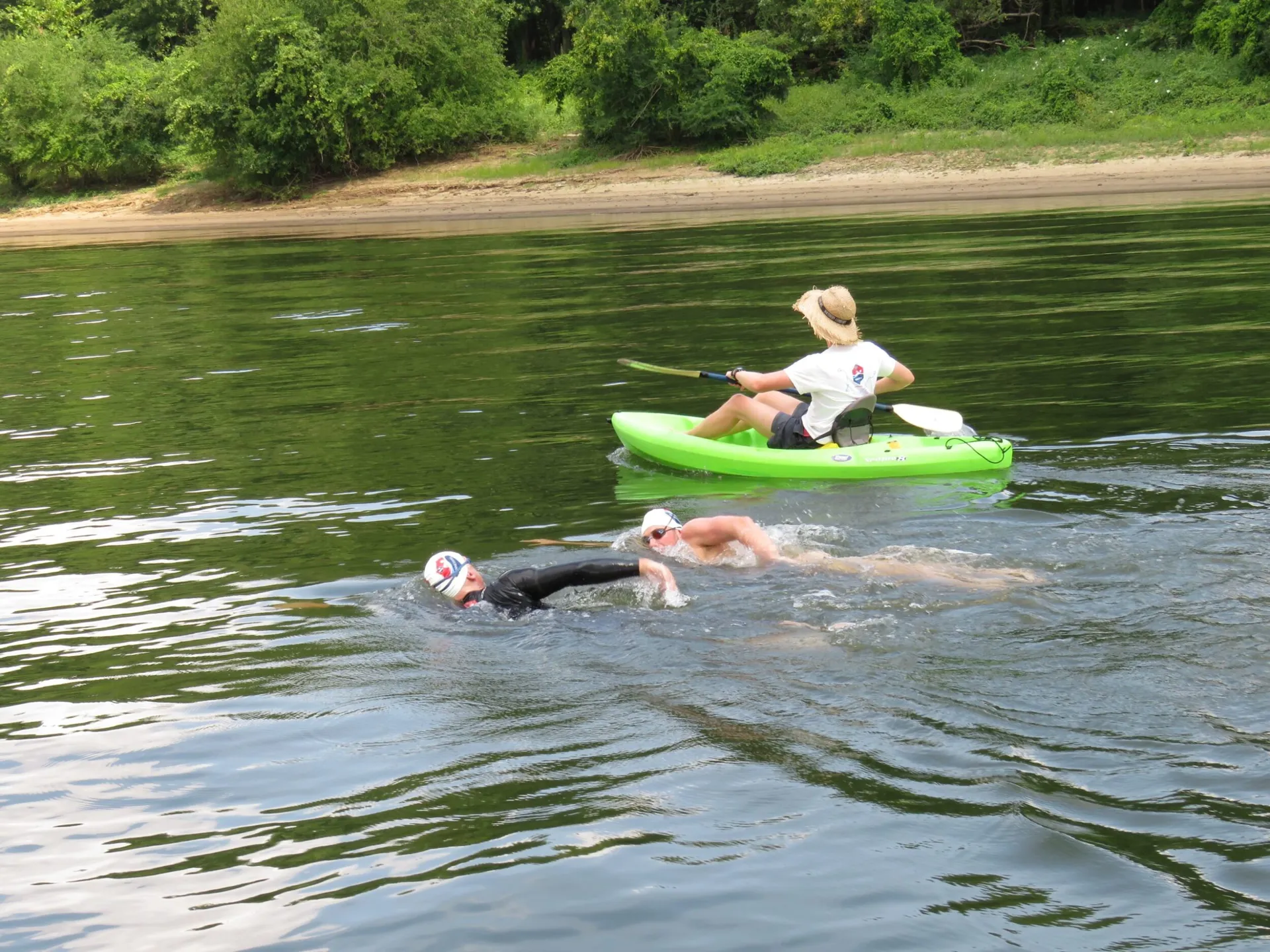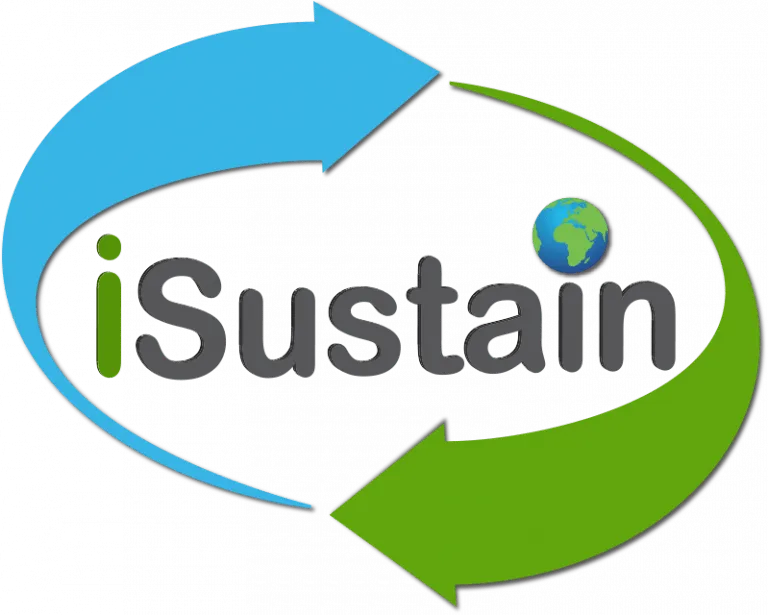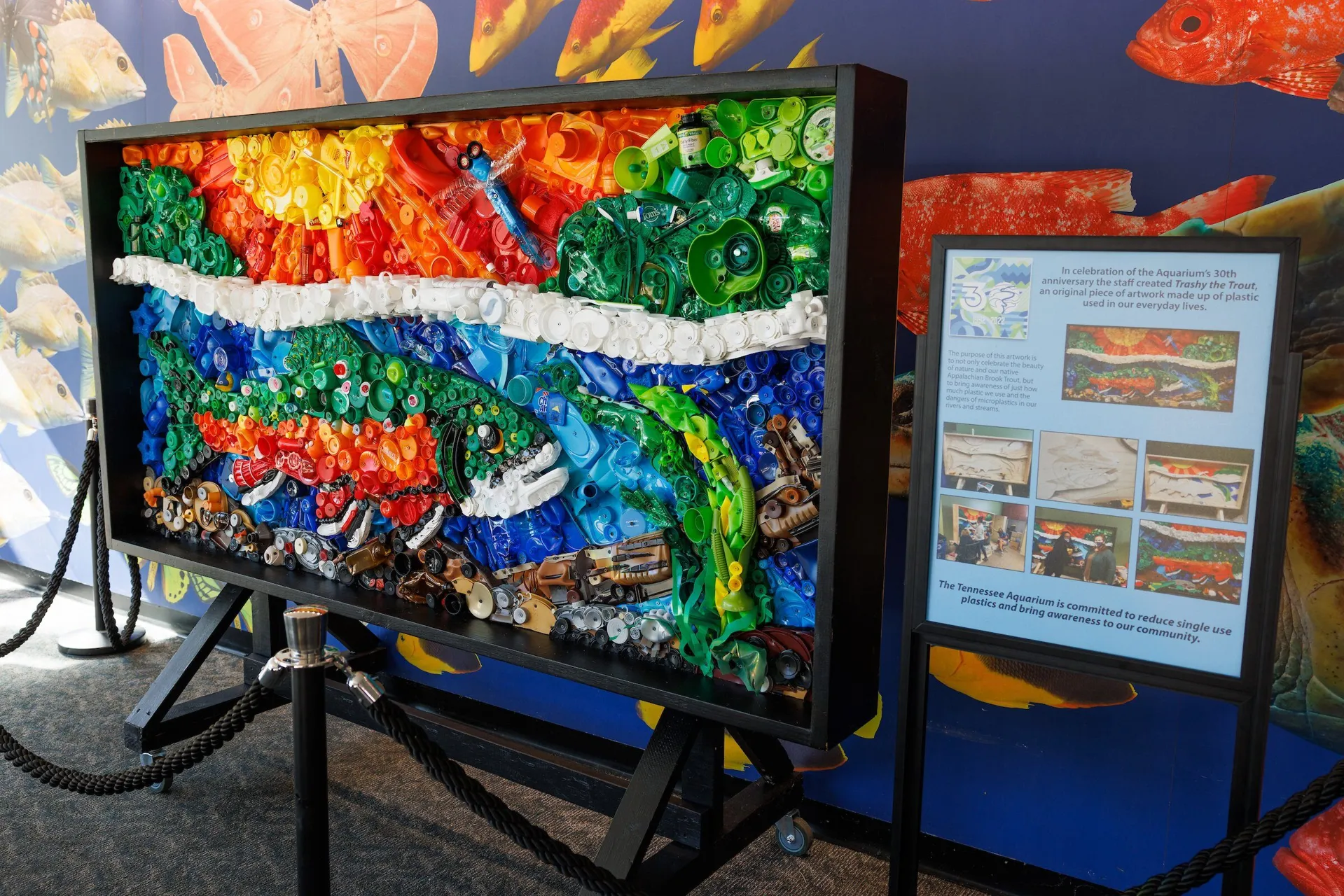Every year, an average of 8.8 million tons (about 17.6 billion pounds) of plastic fragments or manufactured plastic objects measuring smaller than five millimeters across enter the ocean. There, they’re consumed by microscopic organisms and eventually work their way up the food chain to humans.
Although the bulk of plastic waste originates inland, microplastic is largely seen as a coastal issue. Little is known about how this plague of plastic affects the rivers, lakes and streams through which it passes on its way to the sea. Through research at the Tennessee Aquarium Conservation Institute and collaboration with fellow conservation organizations, we’re working to better understand – and educate visitors about – this important issue.
The Washed Ashore exhibit was hosted as a temporary exhibit at the Tennessee Aquarium in the summer of 2022. While the exhibit is no longer on display at the Aquarium, we are happy to have maintained “Stella the Seahorse” on the Aquarium campus inside the Island Life gallery. Additionally, a sculpture titled, “Trashy Trout,” created from plastic trash collected by Aquarium staff, is also viewable in the entrance to the Ridges to Rivers gallery.

Nobody Trashes Tennessee Exhibits
A pair of new exhibits at the Aquarium show how microplastics can negatively affect the health of the ocean as well as rivers, lakes and streams.

Aquarium Conservation Partnership
We’ve joined with top aquariums around the country to encourage everyone to take the first step in reducing plastic pollution.

A Message from Fabien Cousteau
Ocean explorer and conservationist Fabien Cousteau offers some simple actions we can take to help protect these incredible animals and their habitats.

TenneSwim
We were proud to join the efforts of Dr. Andreas Fath whoundertook an epic scientific quest to swim the Tennessee River while conducting extensive water quality tests along the way. (Photo credit: Chase Brasher/River Discovery Center)
Recent News Stories
Tennessee Aquarium and UGA River Basin Center to Host Workshop on Freshwater Microplastic Pollution [Newsroom]
Tennessee Aquarium Joins Forces with 18 Top U.S. Aquariums Tackling Growing Plastic Pollution in Ocean, Rivers and Lakes [Tennessee Department of Tourism & Development]
“Alarming” Level of Microplastics Found in Major U.S. River [National Geographic]
What You Can Do To Help

Proud supporter of Tennessee Aquarium microplastics research

